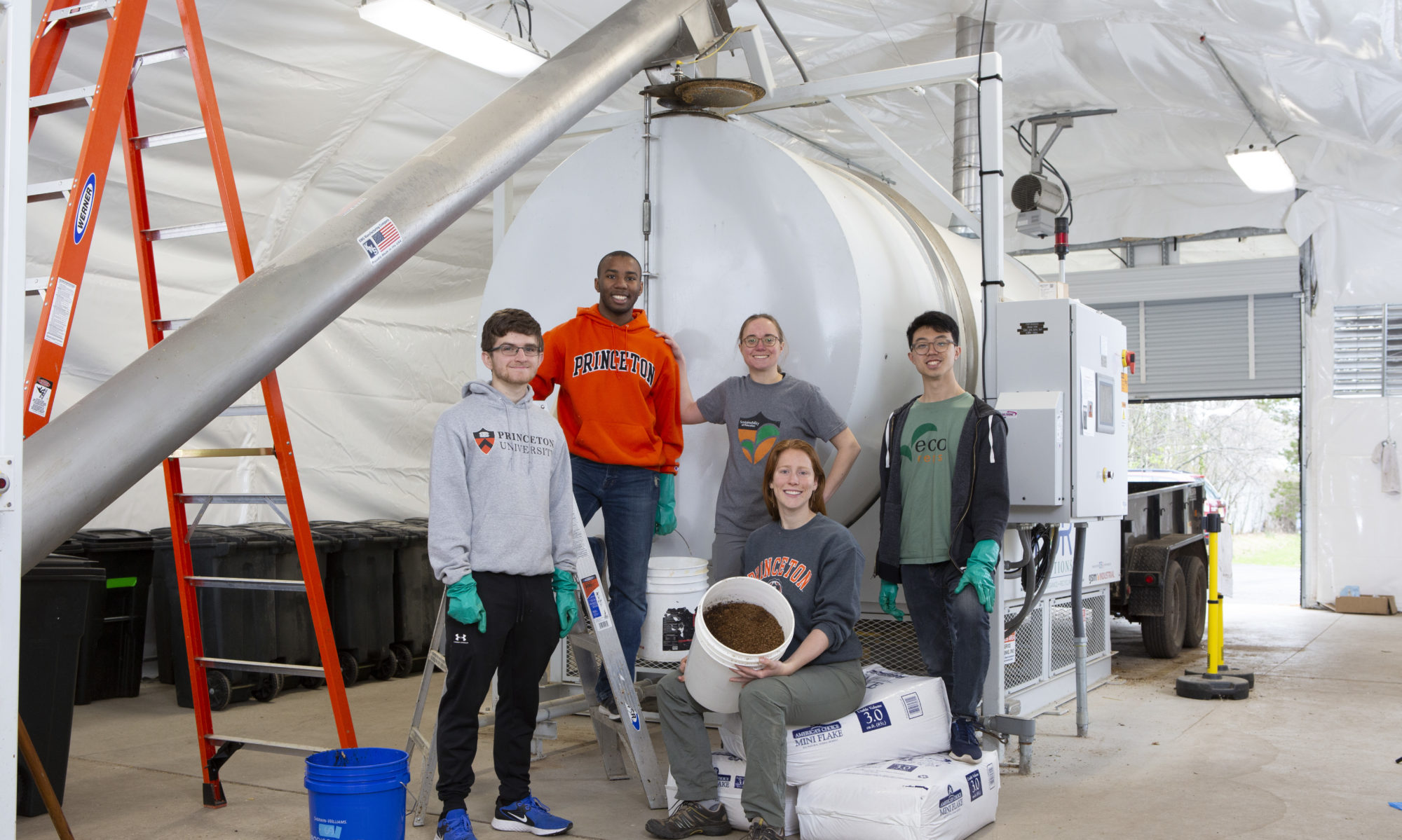Now that the biodigester has been installed, we are actively working on pulling together the final operational pieces to get the system up and running. The first item to arrive: wood shavings!

[Food waste is not the only item being recycled by the campus biodigester, but wood shavings as well! We will be using the wood shavings in these bags which were byproducts of a NJ-based woodworking company]
Why are wood shavings needed?
For efficient aerobic decomposition to occur, organic matter should contain both nitrogen (i.e. food scraps) and carbon. Recommended carbon sources for composting traditionally include dead leaves/vegetation, paper, shredded cardboard, hay/straw, and woody materials.
Adding these “browns” to nitrogen-rich food scraps, or “greens”, creates the perfect environment for composting by providing all three inputs to support key microbial activity: nutrients, water, and oxygen:
Organic matter + H2O + O2 -> COMPOST + byproducts (CO2, H2O, Heat)
The carbon and nitrogen in the organic matter provide energy and protein building capacity, respectively, to support the presence of microbes that transform the uneaten food and wood shavings into compost. Water embedded in the food waste provides moisture necessary for microbial growth. However too much moisture can restrict airflow, depriving the microbes of oxygen. When mixed with the food waste, the carbon source facilitates aeration by absorbing excess moisture and creating spaces for airflow.
At the start of the composting process, the ideal carbon to nitrogen (C:N) ratio is cited to be around 30:1. Although a useful goal to achieve, this ratio may differ depending on the bioavailability of the materials used, or the composition of the feedstock. For example, relatively more carbon-rich material needs to be added to the feedstock if a) the material has a low carbon content, b) the carbon is stored in compounds highly resistant to decomposition or c) in cases of high-moisture food scraps (think soupy v.s. starchy mixtures).
For the biodigester, acceptable materials include shredded cardboard, straw or hay, wood chips, and wood pellets; however, the founder of FOR Solutions has found that kiln-dried wood shavings (such as those pictured below) are the best option for the following reasons:
- They are dry enough to absorb the excess moisture in the recovered food to achieve the desired moisture content of the feedstock
- They have a high enough carbon content to provide for the optimal C:N ratio in the feedstock, which is 15-30:1, and
- They maintain their unconsolidated consistency even when wet, so they contribute to the porosity of the feedstock inside of the digestion vessel, allowing for air exchange.

Research by the founder of FOR Solutions has confirmed that a 4:1 ratio by weight of recovered food to wood shavings is optimal. However, we may need to alter that ratio as necessary depending on the make-up of our food scraps.
Aeration of the digestion vessel is achieved by a regenerative blower that provides a complete exchange of all air inside of the digestion vessel every 15 minutes. The digestion vessel rotates once every hour. This contributes to the decomposition of the recovered food and forces the feedstock to migrate from the input end to the discharge end of the digestion vessel, ready to be recovered and put to good use!
Stay tuned for more project updates!
Sources and to learn more general information about the composting process:

















